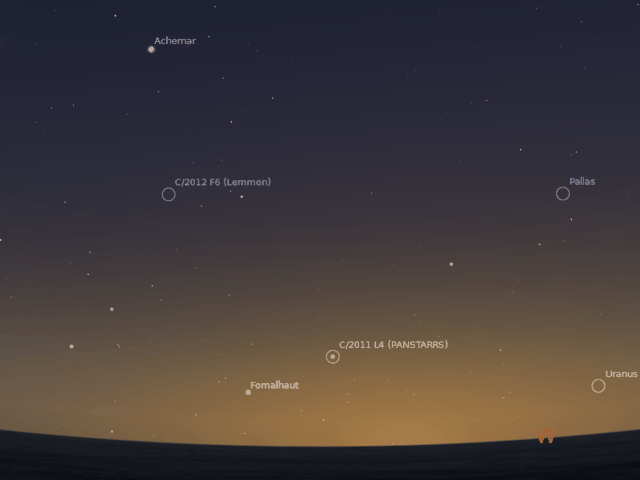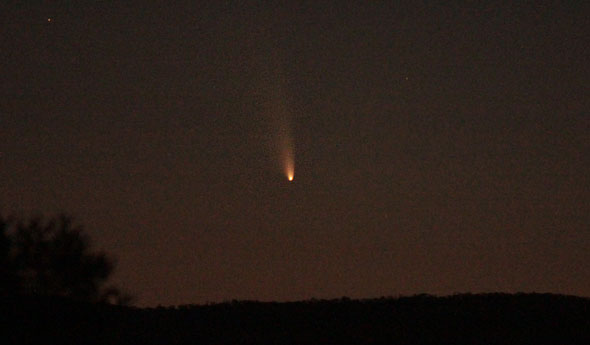Comet C/2011 PANSTARRS photographed from near the Mt Burnett Observatory in Victoria by astrophotographer, Chris Samuel
Comets Everywhere!!
If you’re fast and you’ve got clear dark skies, this is a great time to head outside, look up and spot two comets currently gracing our part of the universe.
Comets C/2011 PANSTARRS and C/2012 F6 Lemmon are currently visible not long after sunset. If you’ve got a good clear view of the western horizon and relatively dark skies you can spot PANSTARRS naked eye and Lemmon with a pair of binoculars (although it’s pretty faint in comparison).
CLICK TO ANIMATE: Animation showing the relative positions of Comets C/2011 PANSTARRS and C/2012 F6 Lemmon from Australia. NB: Exact views will change from your specific location.
The comets will only be visible for the next few days before they dip below our horizon to begin their swing around the Sun and commence the outward journey into the cold darkness of space.
If you miss these latest visitors to the inner Solar System, don’t despair. There are a few more comets due in our neighbourhood very soon.
Comet ISON is due towards the end of the year and in 2014 a comet discovered by prolific sky hunter Robert McNaught C/2013 A1 (Siding Spring) will pass relatively close to Mars.
This image of Comet PANSTARRS was captured by CDSCC’s Dr Korinne McDonnell. Photo taken near Mt Stromlo Observatory, Canberra ACT. Credit: K.McDonnell
Update: Comet C/2011 PANSTARRS was visible in Canberra’s skies on March 6 and will slowly disappear below the horizon over the next few days. It was visible to the naked eye at about 8.15pm and set about 8.50pm AEDT.
For more information on these comets, you can visit the excellent blog Waiting for ISON




